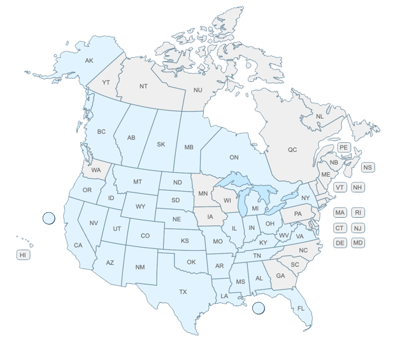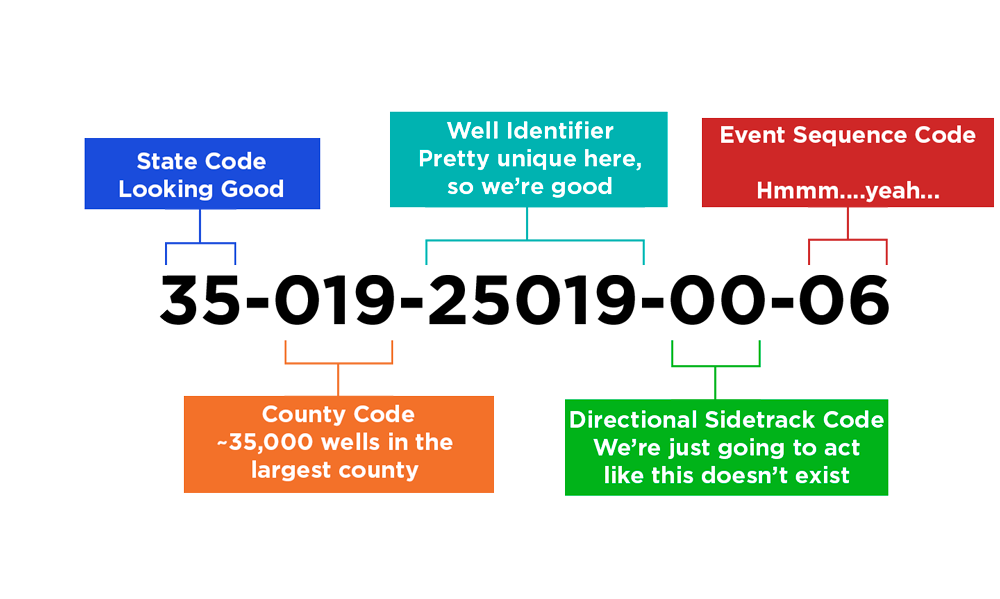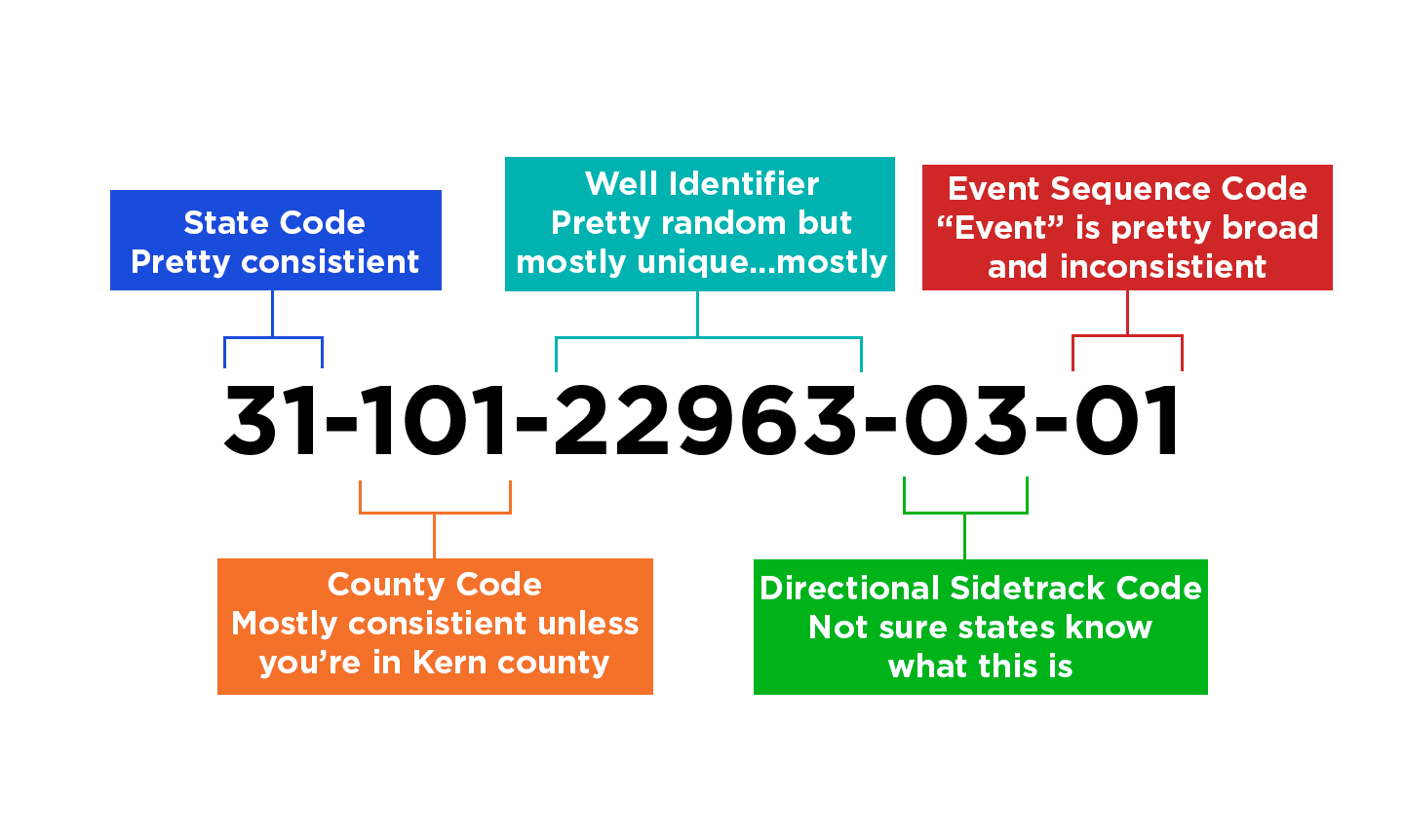3 min read
History of the API Number
This blog is the first in a series all about our favorite well identifier, the API number. We talk to a lot of users and we find that there is a...
You need data. You need mapping. You need tools to analyze that data. Now you can do everything in a single, easy to use platform.
Perfect for users who need access to basic well level data. If you're only interested in a few wells and currently use state sites, this plan is for you.
The industry didn't start with unconventionals and neither does our data. We cover the full historical dataset across every producing state and province. Don't settle for inferior data, check out our coverage for any state or province you're interested in.


This blog is the latest in our series all about our favorite well identifier, the API number. We talk to a lot of users and we find that there is a lot of misunderstandings about what exactly the API number is and is not. This series is aimed at trying to help clear up some of those misunderstandings and give insight into how we handle the API issues and inconsistencies here at WellDatabase.If you missed it, check out our blog - The History of the API Number.
Our previous blog outlined the history of the US UWI standard as well as a description of the US UWI as published by the PPDM Association. The ownership of this standard was transferred from the American Petroleum Institute to the PPDM Association in 2010. An industry work-group was subsequently formed to update the standard. This standard set forth instructions for assigning a 12-digit UWI with an additional 2-digit extension being optional. The following guidance was offered to encourage consistency in the assignment of the 2-digit extension:
Use positions 13-14 only to describe events that create physical configuration changes within the wellbore:
Never use position 13-14 to identify:
Avoid using positions 13-14 to describe administrative events such as:
For many years prior to their adoption of RBDMS, the Oklahoma Corporation Commission (OCC) used a 10-digit identifier with an alpha suffix to denote the regulatory event. An example is 35-019-25019 shown below with the original number assigned by the OCC, the number imported into RBDMS after it was converted from the alpha version, and the correct number according to the US Unique Well Identifier Standard:
|
Regulatory Event |
OCC API |
Converted OCC API |
Correct API |
Comment |
|
Original ITD |
35-019-25019 |
35-019-25019-00-00 |
35-019-25019-00-00 |
|
|
Amendment |
35-019-25019-A |
35-019-25019-00-01 |
35-019-25019-00-00 |
Moved loc |
|
Amendment |
35-019-25019-B |
35-019-25019-00-02 |
35-019-25019-00-00 |
Drlg fluid disp |
|
Amendment |
35-019-25019-C |
35-019-25019-00-03 |
35-019-25019-00-00 |
Amended TD |
|
Permit Renewal |
35-019-25019-D |
35-019-25019-00-04 |
35-019-25019-00-00 |
|
|
Well Spud |
35-019-25019-D |
35-019-25019-00-04 |
35-019-25019-00-00 |
|
|
Completion |
35-019-25019-D |
35-019-25019-00-04 |
35-019-25019-00-00 |
Woodford |
|
Permit to RC |
35-019-25019-E |
35-019-25019-00-05 |
35-019-25019-00-01 |
|
|
Recompletion |
35-019-25019-E |
35-019-25019-00-05 |
35-019-25019-00-01 |
Sycamore |
|
Permit to RC |
35-019-25019-F |
35-019-25019-00-06 |
35-019-25019-00-02 |
|
|
Recompletion |
35-019-25019-F |
35-019-25019-00-06 |
35-019-25019-00-02 |
Commingled |
Please note that the 13th and 14th digits of the Well ID were incremented for each regulatory event, not the completion sequence. When you look at the OCC Well ID, it looks like the well has been recompleted 6 times but it has only been recompleted twice and the last one is questionable because they drilled out the bridge plug over the Woodford and commingled two existing sets of perforations in the Woodford and Sycamore. It is also worth mentioning that the OCC “zero fills” the 11th and 12th digit of the Well ID so identifying additional wellbores is not possible. This is truly a problem for wells drilled off pads and those with long wellbores because there is not an easy way to identify potential wellbore collisions and other environmental issues.
Historically, WellDatabase has used the UWI as reported by the OCC but going forward, WellDatabase will not increment the 13th and 14th digit of the Well ID for amendments and historical wells will be corrected in the future.

3 min read
This blog is the first in a series all about our favorite well identifier, the API number. We talk to a lot of users and we find that there is a...

We are privileged to have Pam Koscinski as a valuable team member at WellDatabase. Pam's remarkable journey in the oil and gas industry and her...
.png)
In the oil and gas industry, data visualization is a game-changer. It empowers operators to make faster, smarter decisions by combining complex...